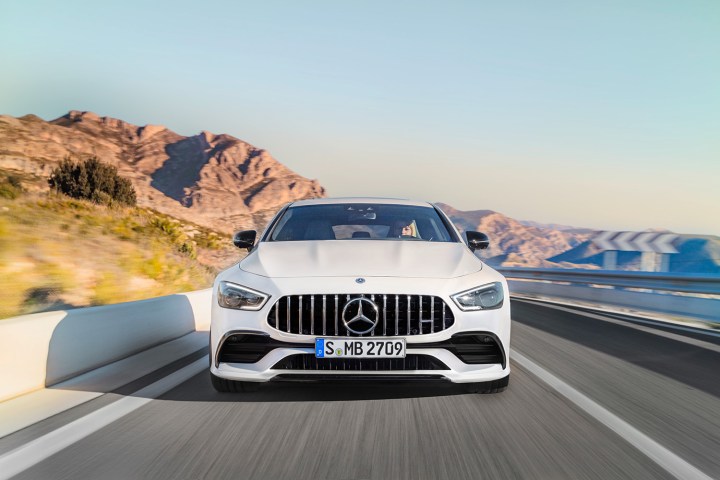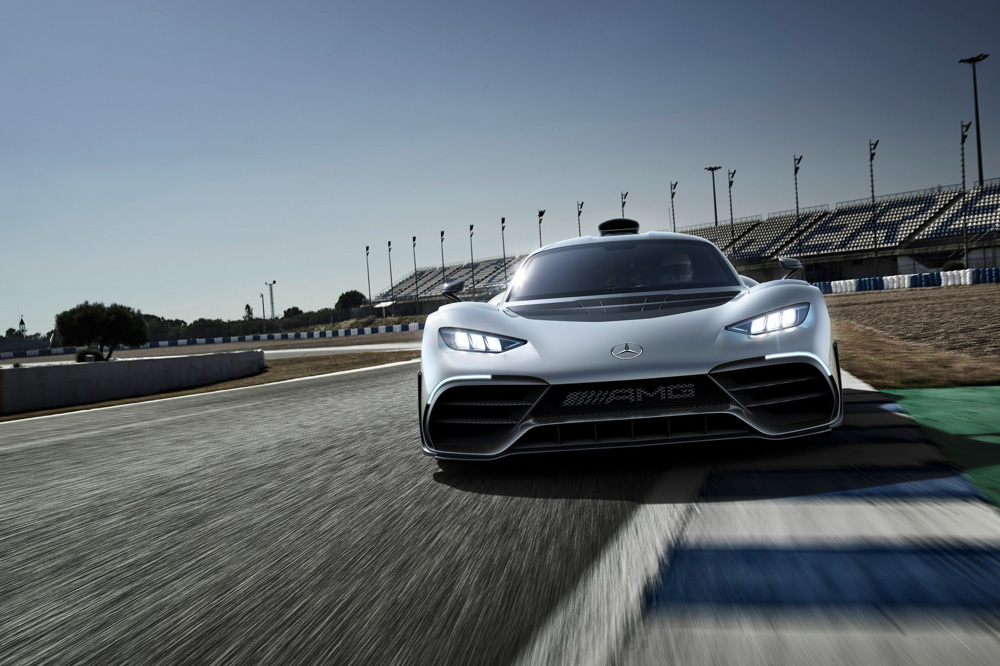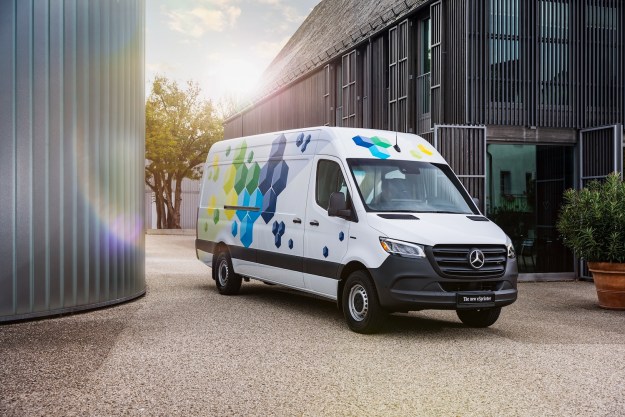
Mercedes-AMG is taking baby steps into the world of electrification. It’s the proverbial calm before the storm. In Detroit this year, the company introduced a line of mid-range models denoted by the -53 suffix that rely on a mild hybrid system to boost performance while keeping fuel economy in check. They represent the first salvo in a model blitz that will include a plug-in hybrid powertrain with V12-like power and culminate with the mind-bogglingly quick Project One.
“We have a lot of other opportunities,” Mercedes-AMG boss Tobias Moers told Digital Trends when asked about the future of the V12 engine. “Electrified powertrains,” he clarified.
Electrifying a performance car presents a unique set of challenges. The extra hardware inevitably adds weight, which in turn compromises handling and performance. Moers explained it takes engineering prowess to overcome these obstacles. “It works perfectly if you do it the right way,” he suggested before providing us with an example.
“You can expect some technologies transferred from Project One to our other cars.”
“Maybe you remember the GT concept from Geneva last year. It had a V8 engine in the front and an electric motor on the rear axle. Everything is in development. It will go into production one day,” Moers revealed. That’s good news for performance enthusiasts.
Shown to preview the GT Four-Door Coupe, the concept allied an evolution of AMG’s twin-turbocharged, 4.0-liter V8 engine and a powerful electric motor to offer a monstrously high output of 805 horsepower. It took less than three seconds to reach 60 mph from a stop. Alternatively, the battery pack stored enough electricity to power the sedan on its own for short distances.

Will those specs carry over? “More or less, yeah.” AMG will develop its own battery pack in order to reign in weight gain. It could also rely on carbon fiber to shed extra pounds in standalone cars like the two-door GT. Adding composite materials to a model based on a Mercedes-Benz platform (such as the E-Class or the GLC) becomes more complicated, though.
Moers believes noise represents a big part of AMG’s emotional appeal. He’s not interested in making a quiet car that doesn’t rumble a little bit when its features get ruffled because the passengers won’t feel the power and the performance stuffed under the hood. Every car in AMG’s current portfolio snaps, crackles, and pops as it races around a track. At full song, the GT sounds like Germany’s answer to Pavarotti. So, what happens when you turn off the combustion engine and drive only on electricity?
“If you run [12 miles] in electric mode, then maybe it’s okay to have your freedom and it’s quiet. We’re not fully done with it, though. We do a lot of research together with companies, musicians, gaming people to find what could be the right sound for an electric-driven AMG. We’re not done with that journey; we’re just collecting a lot of input.”
AMG will release another form of mild electrification: electric turbocharging.
He also told us AMG will release another form of mild electrification: electric turbocharging. Already found in a small handful of production cars, including the Audi SQ 7, the electric compressor delivers a boost without a hint of lag because it’s zapped into action. In comparison, a standard turbocharger driven by exhaust gasses needs time to spool up. Moers wouldn’t reveal precisely when we’ll see AMG’s electric turbo in showrooms but he assured us it’s not a long-term project that’s a decade out.
Electric turbocharging technology comes straight from the Project One, the Formula-One-turned-road-car AMG unleashed last year as a birthday present to itself. It’s a hybrid, too. Its 1,000-horsepower powertrain consists of a V6 borrowed from the brand’s championship-winning Formula One car, a pair of electric motors that power the front wheels, and a third motor for the rear wheels.
The entire 275-strong production run is already sold out in spite of a $2.7-million price tag. Moers never expected such an immensely positive response to the Project One; AMG could quadruple production and still sell every example. More than a future classic, it’s a rolling showcase of the brand’s engineering might, and it will have a formative influence on future production cars.
“You can expect some technologies transferred from Project One to our other cars,” Moers revealed. “We are chasing performance with hybrids, not long range. We could do that, but our first approach is a performance approach,” he added.
Editors' Recommendations
- Mercedes G580 electrifies an off-road icon
- Some on Apple’s failed car project reportedly had a cruel name for it
- How do you crash-test an EV with an 871-pound battery? Mercedes showed us
- Mercedes-Benz Vision One-Eleven concept looks to the past for inspiration
- The Mercedes-AMG EQE might be the best luxury EV right now






